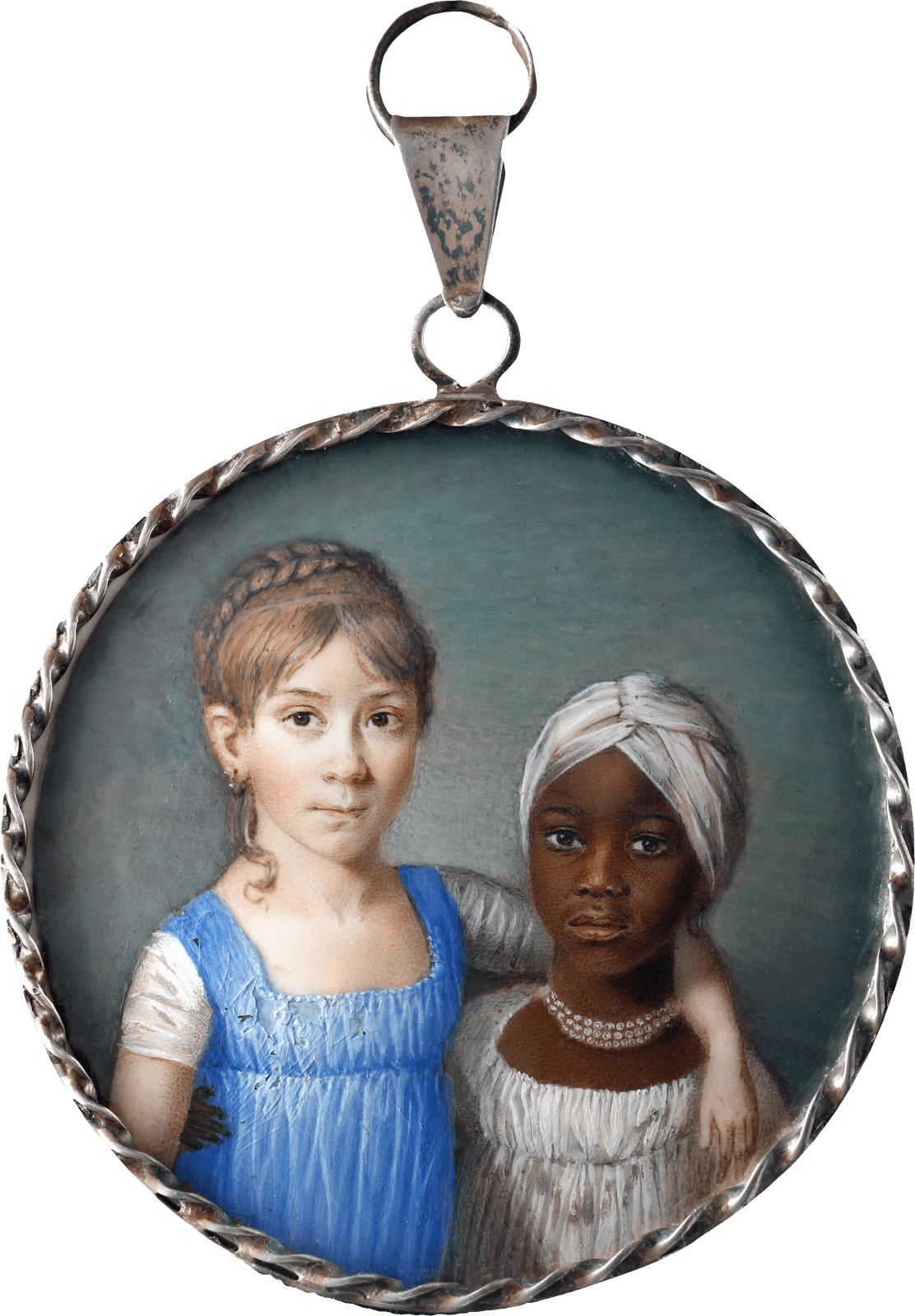
French School
To view all current artworks for sale visit philipmould.com
This remarkable portrait appears to represent a relationship all too rare in the nineteenth century; one of friendship between girls from different ethnic backgrounds. Here, in spite of assumptions, then commonly held, about the inferiority of people of colour, the two sitters, young girls, are shown as equals. In a touching gesture, which surely must be one of friendship, the white girl holds her arm around the shoulder of the black girl, who in turn puts her arm around the waist of her companion.
One of the most striking features of this portrait is the fact that the two sitters are presented as equals, again, a rare occurrence in historical portraiture. Both look directly out of the portrait at the viewer. This is in marked contrast to the genre in which black sitters feature most prominently in European art of this period, that of the aristocrat or aristocratic family accompanied by a servant. In portraits of this kind, the black servant is treated as an indicator of wealth – almost akin to a fashion accessory or pet – and is usually shown to be looking up at his or her masters, tending to their needs. Here, however, the frontal gaze and pose show the sitter to have autonomy of thought and action. It is notable, moreover, that the black girl wears jewellery in the form of a fine rope of pearls and an earring. It may be significant that the other girl is less finely adorned, wearing only a simple earring. All of these details seem to suggest that the black girl either never was a slave or is a slave who has since been freed, although this latter prospect is made unlikely by the youth of the sitter.
In spite of this seeming message of friendship, radical in the context of the day, there are discrepancies in the treatment of the two sitters. The black girl is shown to be lower down than her white counterpart, which could suggest a racial hierarchy, although, given the evident youth of the girls depicted, it could be due to the fact that the one girl is older than the other. More significant is the fact that the black girl is shown wearing “exotic” clothing in the form of a white dress and matching turban, which markedly differentiates the black sitter from her companion. Nevertheless, it is striking that the garment she is shown wearing is both clearly of a fine quality and, in its neckline and cut, is in keeping with the latest fashions – popularised by Napoleon’s consort, the Empress Josephine (1763-1814) – which are also sported by her companion.
The precise significance of the likely gesture of friendship shared between these two girls will remain a mystery until their identities can be rediscovered. However, some significance may lie in the context in which the portrait was created. Stylistic evidence suggests that this portrait is a work of a French artist. Dating to the first years of the nineteenth century, it may be that this image of improbable friendship relates to the change in status of black slaves in France that had taken place during the French Revolution. In France, slavery had long been prohibited. But, although slavery was banned on the French mainland, it was not in her colonies. The French Revolution changed this, however. The government led by Maximilien Robespierre (1758-1794) declared that slave-holding in any French dependency was illegal and freed all slaves, offering to pay former slave-holders off with a fixed sum. This policy was one that Napoleon Bonaparte (1769-1821), acting as First Consul, would later have to retract. Fearful of being undercut by their British-owned neighbours, where slavery was yet to be outlawed, French former slave-holders in the Caribbean threatened to make themselves the subjects of the British crown. The decision taken by Napoleon prompted a wave of uprisings across the Caribbean, not least in Haiti, where forces led by Toussaint Louverture (1743-1803), “the black Napoleon”, achieved considerable successes.
Provenance
Edward Grosvenor Paine (d. 1989), New Orleans;his executor's sale, Christie’s, London, 15th October 1996, lot 70.
Be the first to hear about our available artworks
* denotes required fields
We will process the personal data you have supplied in accordance with our privacy policy (available on request). You can unsubscribe or change your preferences at any time by clicking the link in our emails.